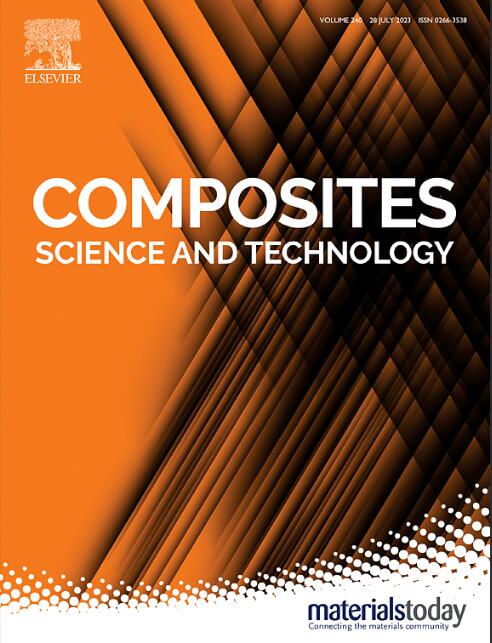Dual covalent bond induced high thermally conductive polyimide composite films based on CNT@CN complex filler
IF 8.3
1区 材料科学
Q1 MATERIALS SCIENCE, COMPOSITES
引用次数: 0
Abstract
Polyimide (PI) possesses excellent high-temperature resistance, insulation properties, and mechanical properties, making it widely used as a flexible printed circuit board substrate and high-temperature electrical insulation material. However, the irregular arrangement of PI molecules results in a relatively low thermal conductivity. This work utilizes the active groups on the surface of carboxylated multi-walled carbon nanotubes (MWCNTs) and carbon nitride nanosheets (CNNS) to obtain CNTs@CN complex fillers containing covalent bonds. The thermal conductivity of CNTs@CN/PI with double covalent bonds can be up to 6.63 W m−1 K−1. The covalent bonds between fillers and fillers as well as between fillers and the matrix provide efficient and continuous pathways for phonon transmission. Additionally, finite element analysis further reveals the heat transfer mechanism of the CNTs@CN/PI composite film. Therefore, this will provide a feasible solution to enhance the thermal conductivity of PI, making it more promising for applications in electronic devices.

基于 CNT@CN 复合填料的双共价键诱导型高导热聚酰亚胺复合薄膜
聚酰亚胺(PI)具有优异的耐高温性能、绝缘性能和机械性能,因此被广泛用作柔性印刷电路板基材和高温电气绝缘材料。然而,PI 分子的不规则排列导致其热导率相对较低。本研究利用羧化多壁碳纳米管(MWCNTs)和氮化碳纳米片(CNNS)表面的活性基团,获得了含有共价键的 CNTs@CN 复合填料。具有双共价键的 CNTs@CN/PI 的导热系数可达 6.63 W m-1 K-1。填料与填料之间以及填料与基体之间的共价键为声子传输提供了高效、连续的途径。此外,有限元分析进一步揭示了 CNTs@CN/PI 复合薄膜的传热机制。因此,这将为增强 PI 的导热性提供一个可行的解决方案,使其在电子设备中的应用前景更加广阔。
本文章由计算机程序翻译,如有差异,请以英文原文为准。
求助全文
约1分钟内获得全文
求助全文
来源期刊

Composites Science and Technology
工程技术-材料科学:复合
CiteScore
16.20
自引率
9.90%
发文量
611
审稿时长
33 days
期刊介绍:
Composites Science and Technology publishes refereed original articles on the fundamental and applied science of engineering composites. The focus of this journal is on polymeric matrix composites with reinforcements/fillers ranging from nano- to macro-scale. CSTE encourages manuscripts reporting unique, innovative contributions to the physics, chemistry, materials science and applied mechanics aspects of advanced composites.
Besides traditional fiber reinforced composites, novel composites with significant potential for engineering applications are encouraged.
 求助内容:
求助内容: 应助结果提醒方式:
应助结果提醒方式:


